The Lunch Line – Fall 2019 |
|
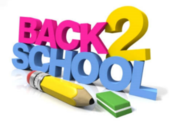 |
Each section contains updates relevant to those nutrition programs. You can jump to the section you're interested in by clicking the link.
Adult Meal Pricing Requirements for SY 2019-20
The required minimum meal prices for adults for School Year (SY) 2019-20 will remain the same as SY 2018-19. The calculation is based on the previous year’s state and federal reimbursement rates, plus the national average per meal value of U.S. Department of Agriculture (USDA) Foods.
Adult breakfast rate - $1.80
Adult lunch rate - $3.75 (includes value of USDA Foods).
2019-20 State Attendance Factor Set at 94 Percent
The state attendance factor for school year 2019-20 is 94 percent. School Food Authorities (SFAs) use the attendance factor to complete the required School Daily-Monthly Claims Edit Check and to calculate the average daily attendance reported in CLiCS for monthly claims reimbursement.
2019-20 Reimbursement Rates
USDA has issued the updated 2019-20 federal nutrition program reimbursement rates. SFAs will see an increase of one cent in the federal paid lunch rate; nine cents for the free and reduced-price lunch rates; five cents for the free and reduced-price breakfast rates; one cent for certified menus (up from 6 cents); and one cent per half-pint for the Special Milk Program rate. View rates for 2019-20.
Verification Sampling Method – Standard 3 Percent Error Prone
The list of SFAs that are required to use the Standard 3 Percent Error-Prone Sampling Method in their verification efforts is posted on the MDE Website. This sampling method is required for SFAs with a 20 percent or greater non-response rate from households chosen for verification for the previous school year. Please check the list to determine if you are required to use this sampling method when determining your verification sample for SY2019-20. If your SFA is on the list, a separate communication will be sent to the Food Service Director with further instructions.
Have you entered your 2019-20 Paid Lunch Prices in CLiCS?
Each year, the Minnesota Department of Education (MDE) must report to USDA every SFA’s student-paid lunch price for the current year. In order to gather this data, we require that each SFA enter the data in CLiCS by 5 p.m. on September 30, 2019. Failure to report by this date will result in school nutrition program payments being withheld until the SFA has reported the appropriate student-paid lunch prices. Detailed instructions on entering paid lunch prices are on the MDE website.
Direct Certification for SY2019-20
As a reminder, the first direct certification file for SY2019-20 was generated in July 2019. Notifications are sent throughout the year to the CLiCS contact with the direct certification module access. Please be sure to forward this message to the person responsible for direct certification in your school/district.
School Food Authorities Receiving an Administrative Review in 2019-20
The list of SFAs scheduled to receive an administrative review has been posted on the MDE website. Due to a waiver that MDE submitted to USDA, the number has been revised from the original list posted in May 2019. Only SFAs listed will receive a review in the 2019-20 school year. There are several 10-minute training videos and other resources to assist SFAs in preparing for the administrative review on the MDE website.

Local Wellness Policy Information
As you plan your school wellness committee meetings this school year, keep in mind that an assessment of your local school wellness policy must be conducted a minimum of once every three years per USDA regulations. Local educational agencies (LEAs) must complete a triennial assessment report by June 30, 2020 if they have not done so already. The results of the triennial assessment must be made available to the public. The MDE wellness webpage has several resources to help you.
|
Food-Based Fundraising and Smart Snacks in Schools
As the school year gets underway, we would like your help to remind district administrators, principals, teachers and other staff about the USDA regulations regarding food-based fundraisers. This information applies to all districts and schools participating in the National School Lunch Program. Use this link to share this information to any school staff who deal with student fundraising activities. Find more about school food fundraisers.
In 2014, USDA identified new requirements, called “Smart Snacks,” for all foods sold in school to students outside of the meal programs. The Smart Snacks requirements affect any group or organization who sells food items to students at school during the school day. This could mean the organization in charge of the school store, vending machines and special fundraisers. Food-based fundraisers that do not meet the Smart Snacks regulations are not allowed on school campus during the school day. The school day is defined as midnight to 30 minutes after the conclusion of instructional day. To raise money, organizations could sell non-food items during the school day, or hold the fundraiser after school, off campus, or on weekends at events such as school plays or sporting events. Organizations can also take orders for non-conforming food as long as the food is not intended to be consumed during the school day. The MDE website has a great deal of information about approved fundraising opportunities Smart Snack regulations.
Completing Free/Reduced-Price Meal Applications on Behalf of Students
At times, a household has not applied for School Nutrition Program/Educational benefits, but they are known to be eligible for benefits. USDA does offer an opportunity for district officials to complete an application for educational benefits on behalf of students. This option is intended for very limited use in individual situations and must not be used to make eligibility determinations for categories or groups of students or for general “hardship” circumstances. There are no instances when a school official can submit for approval an application for free or reduced-price meals without direct knowledge of either household size and income or categorical eligibility based on another source known to the official. Read more about steps to take when completing Free/Reduced-price meal applications on behalf of students.
Are you planning this year's afterschool programs? Don't forget afterschool meals!
The new school year is almost here, and that means the start of afterschool programming too. The Child and Adult Care Food Program (CACFP) provides reimbursement funding to help afterschool programs serve free, healthy meals and snacks to kids in their care at eligible locations through the At-Risk Afterschool Meals Program. Programs can apply at any time of year, but now is the best time to get ready for a September or October start.
There are two ways to check if you are eligible to apply for the program:
-
Child Nutrition Programs Eligibility Map. Just make sure “School Data” is checked under the “NSLP Snack or CACFP At-Risk Snack/Meals” tab, and then go enter the location to see if you are located in the dotted red area indicating eligibility.
- View a list of eligible public schools and their attendance areas for the CACFP At-Risk Afterschool Meals program on the Public School List with Percentage of Free and Reduced-Price Lunch Students from School Year 2018-19. You can view eligible schools by school district or county using the spreadsheet tabs.
For more information, visit the CACFP At-Risk Afterschool Meals webpages or contact Food and Nutrition Services at 651-582-8526 or mde.fns@state.mn.us.
Back to top
Requirements for Students Transferring from Community Eligibility Provision (CEP) and Provision 2/3 Schools to Non-Provision Schools
Effective July 1, 2019, local educational agencies are required to provide free, reimbursable meals to students who transfer during the school year and received free meals at their previous CEP or Provision 2 or 3 eligible school. Minnesota schools must provide these students with free, reimbursable meals for up to 30 operating school days or until a new eligibility determination for the current school year is made, whichever comes first. For more information, please read Policy Memo SP 30-2019.
Farm Bill Implementation Memo: Donated Traditional Foods and Civil Liability
The U.S. Department of Agriculture (USDA) Food and Nutrition Service (FNS) recently released the Farm Bill Implementation Memo (SP 31 CACFP 14 SFSP 14-2019) notifying child nutrition program operators of the 2018 Farm Bill’s expansion of the provision stating that certain groups are not liable in civil cases regarding the donation and service of traditional foods. This provision only applies to food service programs at public and nonprofit facilities that primarily serve American Indians, including those operated by Indian Tribes and Tribal organizations.
Back to top
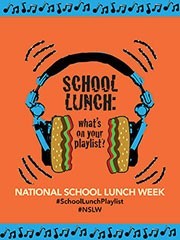
National School Lunch Week – October 14-18
This year’s theme for National School Lunch week is “School Lunch: What’s on Your Playlist?” The theme is tailor-made to spotlight the wide variety of flavors, dishes, delivery options and tastes of today’s school lunch. A “playlist” connotes
a wide range of tastes and is completely individualized, just as school lunch is increasingly “playing to” the customized, made-to-order tastes of students. Today’s school cafeterias are serving up menu items that kids want to eat, with increased choice and customization. For more resources and ideas to help you plan a successful National Nutrition Week campaign, download the NSLW 2019 Toolkit.
|
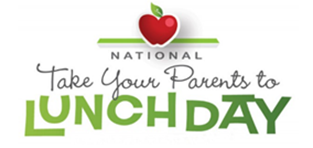
October 16: Take Your Parents to Lunch!
What a great opportunity to let parents in your district know October 16 is a day designated for them! Send out a message via email, social media, school newsletter or fly and invite them to get in line, buy school lunch and grab a seat in the cafeteria with their child!
|
October: National Farm to School Month
Join the fun and learn why October is “National Farm to School” month. Thousands of schools, early care and education sites, farms, communities and organizations across the country will celebrate food education, school gardens and lunch trays filled with healthy, local ingredients. Explore the national calendar of Farm to School Month events to see how you can celebrate in your school.
|
|
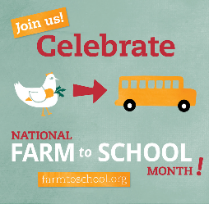 |
Serve Local on Minnesota Thursday!
Kick off Farm to School month and Minnesota Thursdays by serving a healthy, locally sourced lunch menu on Thursday, October 3, 2019! Visit the Minnesota Thursdays Toolkit to access menus, recipes, vendors and promotional resources to help plan, carry out, and share your Minnesota Thursday meal. You can register your school for Minnesota Thursdays, and find local foods on the Minnesota Department of Agriculture’s Minnesota Grown Wholesale Directory.
Share your school’s story and spread the word by using these hashtags:
- #MNAppleCrunch
- #MNfarmtoschool
Back to top
October 17-18: Procurement for Small to Medium-Sized SFAs
MDE’s Food and Nutrition Service is excited to offer the annual two-day School Nutrition Director training October 17-18, 2019. This year we will focus on procurement basics for small to medium school nutrition programs. These programs have student enrollment of under 5000 students. The training will be held during the MEA break at five locations: Thief River Falls, Fergus Falls, Sartell, Mountain Iron and Rochester. Registration is available on the Training and Professional Standards webpage.
Tuesdays @ 2 Webinars
“Tuesdays @ 2” sessions are live training opportunities presented in a webinar format. All sessions begin at 2 p.m. on Tuesdays and will be 30–60 minutes in length unless otherwise noted. Upcoming sessions include:
- September 24 – Uploading Enrollment for Direct Certification and Back-to-School Update
- October 1 – Verification Process for School Nutrition Programs
- October 8 – Meal Pattern Updates
Access further information and registration for Tuesdays @ 2 webinars.
Back to top
Minnesota Farm to School and Early Care Grant Proposals – Due November 7, 2019
The Minnesota Department of Agriculture (MDA) will make Agricultural Growth, Research and Innovation (AGRI) Farm to School and Early Care Grants available for K-12 institutions that participate in the National School Lunch Program (NSLP) and early care organizations that participate in the Child and Adult Care Food Program (CACFP).
The MDA will award up to $400,000 to eligible organizations to increase the use of Minnesota grown and raised foods through planning and feasibility studies or equipment purchases and physical improvements. To learn about how past AGRI grantees have used their funds, and to apply for the grant, visit:
Applications for AGRI Farm to School and Early Care Grants must be submitted by 4 p.m. CST on November 7, 2019.
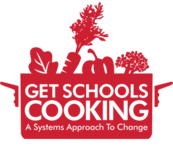
“Get Schools Cooking” Grant Opportunity
Get Schools Cooking (previously known as the School Food Support Initiative), a program of Chef Ann Foundation, provides school districts with technical assistance and funding to help transition their Food and Nutrition Service departments from a “heat and serve” or processed food model, to one that is rooted in scratch cooking using real ingredients.
Through Get Schools Cooking, food service teams are guided through an intensive, three-year program. The 2019 grant application period closes at 6 p.m., Monday, October 28, 2019. Learn more about the grant on the Chef Ann Foundation website.
|
Back to top
Crediting Coconut, Hominy, Corn Masa, and Masa Harina
The U.S. Department of Agriculture (USDA) Food and Nutrition Service (FNS) recently released the Crediting Coconut, Hominy, Corn Masa, and Masa Harina in the Child Nutrition Programs Memo (SP 34 CACFP 15 SFSP 15-2019). This memo, which rescinds and replaces Crediting Coconut, Hominy, Corn Masa, and Corn Flour in the Child Nutrition Programs (SP 22 CACFP 09 SFSP 08-2019), provides updated guidance on crediting coconut (including dried coconut), hominy, corn masa, and masa harina. It also provides direction on identifying corn products that credit toward the grain requirement.
Back to top
New: Buy American Fact Sheet
A new resource for school meals program operators on the Buy American Provision is now available. The provision requires SFAs to purchase, to the maximum extent practicable, domestic commodities or products. View the Buy American Fact Sheet.

Back to school Tips!
Team Nutrition is happy to join the excitement of schools, teachers, school nutrition professionals, students, and families to start a new academic year. This new webpage offers free event ideas, unique nutrition posters, sample taste test ballots and tools to reduce food waste. Team Nutrition also provides useful suggestions and fun tips to assist nutrition professionals, teachers, students and families through Create Your Own MyPlate Menu and free school garden resources.
|
Offer versus Serve Posters
Offer versus Serve (OVS) National School Lunch Program Posters and Lunch/Breakfast OVS Tip Sheets are available for download from the USDA Website. The OVS posters may be used as signage to instruct students to select a reimbursable meal under OVS. The OVS tip sheets are intended for use by school foodservice staff to enhance their understanding of OVS requirements at breakfast and lunch.
Exhibit A Grains Tool Mobile App Now Available
On August 12, 2019, the USDA FNS released the Exhibit A Grains Tool as a new feature on the Food Buying Guide (FBG) mobile app. The Exhibit A Grains Tool was first released on the FBG interactive web-based tool to allow users to search their grain product (as listed on Exhibit A) and enter in the serving size as listed on the product label. The tool then determines:
- the ounce equivalent (oz. eq.) grains or grains/bread serving(s) for the grain product
- the amount of the grain product to serve to obtain a specific meal pattern contribution.
Learn more about the app on the USDA website, or download it via the Apple App Store and the Google Play Store. Check to ensure you have the most current version of the app on your mobile devices!

Smarter Lunchroom Self-Assessment Tool
Step it up! As school begins this year, look at the Smarter Lunchrooms Self-Assessment Scorecard. The scorecard has 60 strategies that lunchrooms can use to nudge kids toward healthier choices. See what your school is already doing and choose a few things to do even better.
|
Breakfast Encourages Students to Thrive – B.E.S.T.
Are you looking for ways to boost school breakfast participation? Do not forget to check out MDE’s school breakfast resources on the Be Your BEST webpage. Some helpful resources include the OVS Reminder Card, the School Breakfast Service Option Grid, Myth Busters, and parent handouts.
Best Practices to Minimize Food Waste
In a policy memo published on August 16, 2019, USDA provided program operators with best practices to minimize food waste for privately donated foods. This memo offers methods and procedures for all food waste activities, donated food storage, USDA commodities, distribution and product dating. These planning methods are for all nutrition programs, including schools, but are a crucial resource for emergency feeding organizations.
Back to top
Manage Preferences | Unsubscribe | FNS Bulletin Archive | Website
|